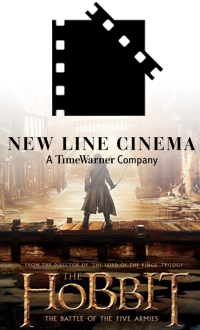

In praise of Peter Jackson’s Hobbit (01.04.14 by Simon J. Cook) - Comments
| Friends, elves and hobbits, lend me your ears. For with ‘The Desolation of Smaug’ soon out on DVD I come to praise Peter Jackson’s interpretation of The Hobbit, not to bury it. The purists (who did love him once) have cried that Jackson is a dictator who has offended against both plot and genre. And the purists are honourable critics. But I come not, friends, to steal away your hearts. I come only to tell you what you already know. |
Let us begin by aping the schema of Jackson’s bloated cinematic interpretation and offering three separate points in his defence.
Firstly, New Zealand actually looks the part. It looks like the ancient Northern Europe in which Tolkien situated the Shire, Bree, Rivendell, Mirkwood and the Lonely Mountain. Most profoundly, the icy waters that surround and autumn snowflakes that fall upon Lake Town evoke those Baltic shores that Tolkien regarded as the original homeland of the English people. Now the other side of the coin is that New Zealand is not a landscape rich with the tamarisk, asphodel, olive and bay reminiscent of the Southern European lands of Rohan and Gondor. But if The Hobbit movies make Jackson’s Lord of the Rings look geographically challenged, that is not here our concern.
Secondly, Jackson is in a sense true to Tolkien’s mature authorial intention. After completing The Lord of the Rings our professor got it into his head that he should redraft The Hobbit, thereby transforming a whimsical children’s fairy-story into a suitable overture to his epic tale of the end of the Third Age. Personally, I love this particular children’s tale above all other literature and am mightily relieved that this redrafting did not come to pass. But it cannot be denied that Jackson, in bringing the story of Bilbo Baggins into greater narrative and stylistic harmony with that of Frodo, is following a path first pointed out by Tolkien. Indeed, some of the material in the movies not found in the original book was nevertheless penned by Tolkien – for example, the meeting of Gandalf and Thorin at Bree, with which the second movie begins (‘The Quest of Erebor’ in Unfinished Tales).
Thirdly, in his famous letter to Milton Waldman, Tolkien surely gave a creative green light to the artistic license of Jackson (and those others who will come after him). As is well known, Tolkien wrote of his desire “to make a body of more or less connected legend” which he could dedicate to England. But what needs to be emphasized here is that Tolkien wanted to make the cycles of this body of legend “linked to a majestic whole, and yet leave scope for other minds and hands, wielding paint and music and drama” (Letter 131 in The Letters of J.R.R. Tolkien, emphasis added). So his mythology for England was envisaged by Tolkien as a collective enterprise, at least in part, to be given shape and colour by the creative hands of as yet unknown multimedia directors.
Surely these three points mitigate some of Jackson’s crimes against Middle-earth? But his true vindication arises from a moment’s further reflection upon the very idea of a mythology for England.
Tolkien gave to us stories from long, long ago, when the world was younger, and more green. Such stories did not come to us by time capsule; they were transmitted, from mouth to mouth and hand to hand, down countless generations. Nor are Tolkien’s stories the sole source of our knowledge of these early ages. As we learn from that fons et origo of Tolkien scholarship, Tom Shippey’s Road to Middle-earth, Tolkien crafted his stories to fit – and even explain – other scattered and often fragmentary sources. For example, the names of most of the dwarves in Thorin’s company, as well as that of Gandalf, are found in the Völuspá, the first poem of the Old Norse Poetic Edda.
Woven into the very fabric of Tolkien’s conception of the transmission of an English mythology is thus a vision of alternative sources, some perhaps fragmentary, others obscure, and some – like those found in the Red Book – more or less complete. And as any philologist knows, variation is the very essence of transmission. The true picture is built up by sifting and juxtaposing sources, by inquiring into their different biases and asking as to the possibility of scribal errors and even editorial censure along the way.
To give but one example, it is hardly surprising that a story told to generations of children passes over in silence the smouldering love between dwarf and elf. Actually, it seems quite likely that our original hobbit witness would simply fail to notice such an affair. It is therefore possible that Jackson is here making use of an entirely different source transmission (given elvish chauvinism, probably dwarvish in origin).
To dismiss alternative sources is the mark of a fundamentalism incompatible with the philological spirit that pervades Tolkien’s stories of Middle-earth. Peter Jackson is to be commended for showing to us who the bloody ‘ell is Tauriel.
Author biography
Simon J. Cook is a professional editor and independent scholar. His other writings can be found via his website: http://yemachine.com.
Spread the news about this J.R.R. Tolkien article:














